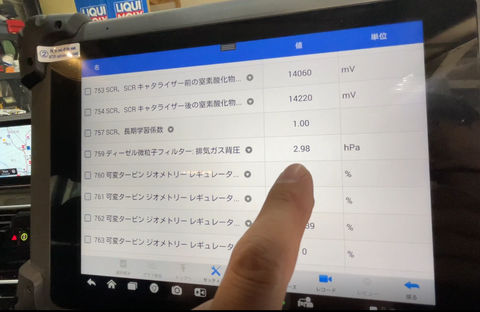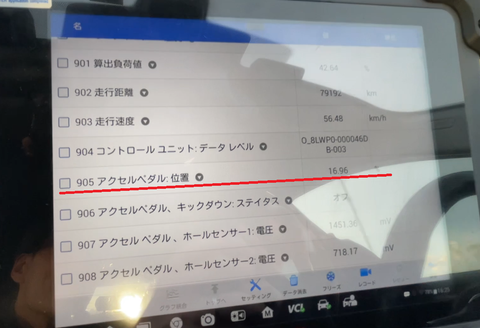BMW 523D G31 intake/EGR "soot" carbon cleaning
Details are available on YouTube!
G31 BMW 523d Touring
At intake/EGR carbon cleaning
We are visiting from Gunma Prefecture.

Although it is a current model vehicle, the mileage is currently 80,000 km.
After collecting data with a diagnostic machine, we will disassemble it immediately.

Technical update version of B47 engine
This is a car equipped with a B47TU engine.
It is newly equipped with a low pressure EGR system and a urea SCR system.
What is the state of carbon deposition?

Nozzle where EGR and intake meet.
Hot exhaust gas from EGR collides with cold air that has passed through the intercooler.
Carbon tends to accumulate here due to differences in temperature and flow velocity.

Swirl flaps to control port airflow.
It seems that the accumulated soot will not be able to make full use of its original performance.

Insert the scope camera into the intake manifold.
There is a lot of carbon deposited on the walls.

Condition inside the EGR cooler.
Soot tends to accumulate near walls where the temperature tends to drop.

Intake port condition.

There is also quite a bit of accumulation around the valve.

Scrape out as much carbon as possible from the intake manifold.
If you skip this preparation, the dirt won't come off properly.


Any carbon that cannot be removed will be removed using ultrasonic cleaning.

The cleaning solution turns black immediately!

Clean the intake port between pickles.
Work carefully by adjusting the compression top dead center to prevent soot from entering the combustion chamber.

A considerable amount will come out.

Beautiful like that

*We have newly introduced a walnut blaster that uses walnut shells.
In addition to the conventional manual cleaning, it is now possible to perform cleaning with even higher precision.
(The image is an example)


I have finished cleaning the parts.
Finish by blasting with high pressure washing.
Like new.



EGR valve and throttle butterfly
Cleaned by hand.

After work, the exhaust gas back pressure value will decrease.
You can check the data showing that the exhaust has improved smoothly.
Why did I clean the intake side?
By cleaning and resetting the intake carbon blockage,
・Difference in sensor value
・Difference in fuel injection amount calculation
・Combustion efficiency
We believe this is because these issues have improved and the amount of soot generated in the exhaust has decreased.

Road test conducted

The accelerator pedal opening percentage will be lower than before the work.
You can feel it running faster even with less pressure than before.

Improved accelerator response and fuel efficiency, etc.
We have received many reports from users after completing the work.
BMW diesel vehicles have increased mileage
We believe that DPF cleaning alone is meaningless .
No matter how much sand is cleaned downstream,
If we don't stop the sediment flowing from upstream,
It's back to normal in no time! I think it's easier to understand if you give an example.
There is always a reason why the DPF tends to clog.
Combustion efficiency decreases due to intake passage becoming narrow due to soot accumulation.
The DPF tends to become clogged due to the increased amount of soot generated during combustion.
Furthermore, the accumulation of soot in the intake accelerates via EGR, leading to a vicious cycle.
- DPF clogging (high back pressure)
・Decrease in response
・Decrease in fuel efficiency
``The root of all evil is this ``intake clogged with soot.''
However, this is not a malfunction or defect.
This is unavoidable due to the structure of the diesel engine and EGR.
There is no doubt that cleaning will bring your car back to the feeling it had when it was new.
long! Happily! Stay well!
For users who want to associate with BMW / MINI diesel cars
We provide EGR/intake cleaning and DPF cleaning services.
